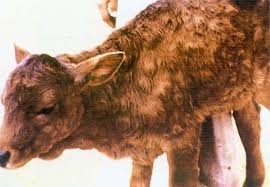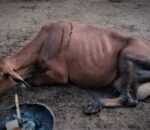Skin problems that are most commonly encountered to veterinarians & medical doctors are described below. After reading this post, you will feel confident about the basic understanding of these skin problems/skin diseases.
Papule (pimble):
A papule is a circumscribed, small, solid, elevated lesion of skin, up to 1cm in diameter, which do not extends beneath dermis.
Nodule:
Nodule is a circumscribed, large, solid, elevation, greater than 1cm in diameter on skin which does not deform at palpation. It involves deeper layers of skin. It could be either inflammatory or neoplastic origin.

Pustule:
It is a small fluctuating, circumscribed, elevated, accumulation of pus (containing inflammatory cells and exudate, causative bacteria, and their necrotic debris) up to the diameter of 1cm and involve only superficial layer of skin. It is mostly associated with infectious diseases e.g., contagious acne and pox etc.
Vesicle:
vesicle is a small fluid filled, acellular, circumscribed, elevated lesion of the skin, up to 1 cm in diameter, and which contauinis serum or lymph
Blister: A blister is like a vesicle but of greater diameter than 1cm.
Cellulitis:
It is a severe, deep, and discrete suppurative process of skin which a poorly defined area of infection tends to dissect through tissue planes.
Folliculitis: It is an inflammation of hair follicles usually involving secondary bacterial infection.
Furunculosis:
When inflammtiojn process of hair follicle ruptures and extends into the surrounding dermis and subcutis, it will be called as furunculosis.
Impetigo: It is less severe inflammation of superficial layers of skin without involving the hair follicles .
Wheel:
It is a circumscribed area of swelling caused by local edema and erythema as seen in the urticaria allergies.
Spongiosis: It is an intercellular edema of epidermis
Scab:
It is dried form of exudate and other inflammatory products collected at latter stages on any skin wound/lesion.
Crust: Crust is dried exudate that accumulate and adhere to the skin surface and hair.
Hyperkeratosis:
It is dry execessive exfoliation and accumulation of fragments of the horny layer of skin(stratum corneum).
Parakeratosis: It is an excessive cornification of superficial layer of skin in which the nucleus of cells are stained.
Orthokeratosis: It is excessive cornification of cells of stratum corneum without nucleus retention.
Excoriation: It is superficial discountinuity on skin surface usually caused by mechanical trauma
Fissure:
Fissure is a linear crack on skin surface which penetrates more deeply usually up to the subcutaneous tissues.
Ulcer:
A break in the continuity of epidermis i.e., an area with complete loss of epidermis and sometime part of underlying dermis with exposure of underlying dermis tissues. An ulcer often heals with scarring that is caused by destruction of dermal collagen.
Erosion:
It is a cutaneous defect with irregular boundary, resulting from a partial loss of epidermis and which does not penetrate the dermis. Because an erosion does not involve the dermis it usually heals without leaving a scar.
Alopecia:
It is the loss of hair from the aea where hair are normally present. It could be cicatricial or non-cicatricial. The cicatricial alopecia is associated with loss of hair including their follicles and it is usually permanent. In the non-cicatricial hair loss, the hair follicles are retained with potential of regrowth of hair.

Hyper-pigmentation:
It is an excessive tissue deposition of melanin pigment. Whereas hypo pigmentationo is less than normal pigmentation ,which could be either congenital or acquired.
Leukoderma (acroderma or hypomelanosis):
It is comlete and acquired loss of melanin pigment from the skin. Albinism is a congenital lack of pigment in skin and other tissues.

Leukotrichia (achromotrichia): It is an acquired loss of pigment from the hair.
Pediculosis: it is presence of lices or other ectoparasites that are generally host specific.
Pruritis:
It is an unpleasant sensation that provokes the deaire to scratch. It could be either physiological or pathological. The physiologic itch refers to a sharp, local, and well defined pruritic sensation. Pathological itch is a less well defined, intense, cutaneous discomfort that may elicit vigorous desire of scratching. A variety f primary or secondary local skin disorders or many systemic diseases are associated with pruritis.
To read about Arthritis & Myositis Click Here.

